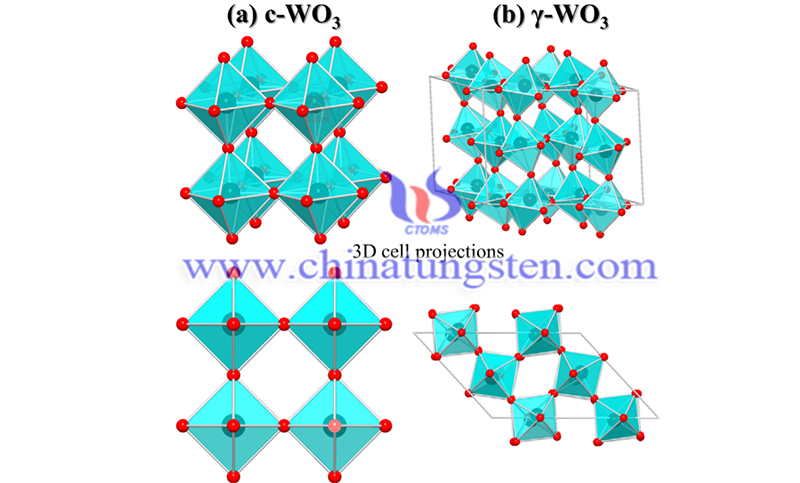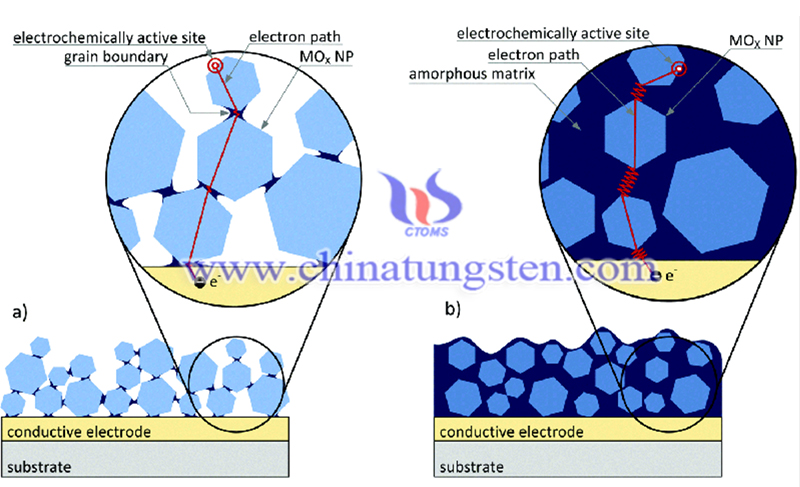Electrochromism in Tungsten Oxide Driven by Interlayer Water Molecules
- Details
- Category: Tungsten's News
- Published on Sunday, 20 December 2020 17:23
Recently, the Zhao Zhigang research team of the Suzhou Institute of Nanotechnology, Chinese Academy of Sciences proposed a new method based on the induction of interlayer water molecules to enhance the near-infrared electrochromism of tungsten oxide, which effectively solved the current optimization problem of the near-infrared electrochromic performance of inorganic materials.
In recent years, electrochromic materials in the near-infrared band (800~2000 nm) have attracted much attention due to their wide application prospects in tumor photothermal therapy, optical fiber communication, information storage, electronic display, aerospace and military camouflage, etc.
At present, near-infrared (NIR) electrochromism is of academic and technological interest for a variety of applications in advanced solar heat regulation, photodynamic therapy, optical telecommunications, and military camouflage. However, inorganic materials with outstanding NIR modulation capability are quite a few.

Herein, the research team proposes a promising strategy for achieving strong NIR electrochromism in tungsten oxide that is closely related to its electrochemical transformation from battery-type behavior to pseudocapacitance, induced by introducing an interlayer space with water molecules within tungsten oxide. Further evidence demonstrates that the interlayer water molecules significantly reduced the energy barrier to ion diffusion and increased the ion flux.
As a result, compared with anhydrous WO3, the as-synthesized WO3·2H2O nanoplates exhibited remarkably improved NIR electrochromic properties, including a large transmittance modulation (90.4%), high coloration efficiency (322.6 cm2 C-1), and high cyclic stability (maintaining 93.7% after 500 cycles), which were comparable to those of the best reported NIR electrochromic materials. Moreover, the application of the WO3·2H2O nanoplate-based electrochromic device resulted in a temperature difference of 11.9 °C, indicating good solar thermal regulation ability.
At a wavelength of 1600nm, the transmission modulation rates of anhydrous WO3, WO3.H2O and WO3.2H2O are 43.8%, 63.8% and 90.4%, respectively. It can be seen that the near-infrared electrochromic modulation rate of tungsten oxide gradually increases with the increase of water molecules.
Coloring efficiency refers to the change in optical absorption intensity per unit of inserted charge, and is another very important parameter for evaluating the performance of electrochromic materials. Experiments show that the coloring efficiency of anhydrous WO3, WO3.H2O and WO3.2H2O nanosheets are 85.4cm2/C, 384.6 cm2/C and 322.6cm2/C, respectively.

In addition, the presence of interlayer water molecules can also improve the electrochromic cycle stability of tungsten oxide materials. Research shows that after 500 cycles, WO3.H2O and WO3.2H2O retain 89.6% and 93.7% of the original optical modulation rate, respectively, which are far greater than the stability of anhydrous WO3 (64.5%).
The paper titled: "Remarkable Near-Infrared Electrochromism in Tungsten Oxide Driven by Interlayer Water-Induced Battery-to-Pseudocapacitor Transition” was published in the recent ACS Applied Materials & Interfaces journal.
- Tungsten Manufacturer & Supplier, Chinatungsten Online: www.chinatungsten.com
- Tungsten News & Prices of China Tungsten Industry Association: www.ctia.com.cn
- Molybdenum News & Price: news.molybdenum.com.cn
- Tel.: 86 592 5129696; Fax: 86 592 5129797; Email: sales@chinatungsten.com



 sales@chinatungsten.com
sales@chinatungsten.com